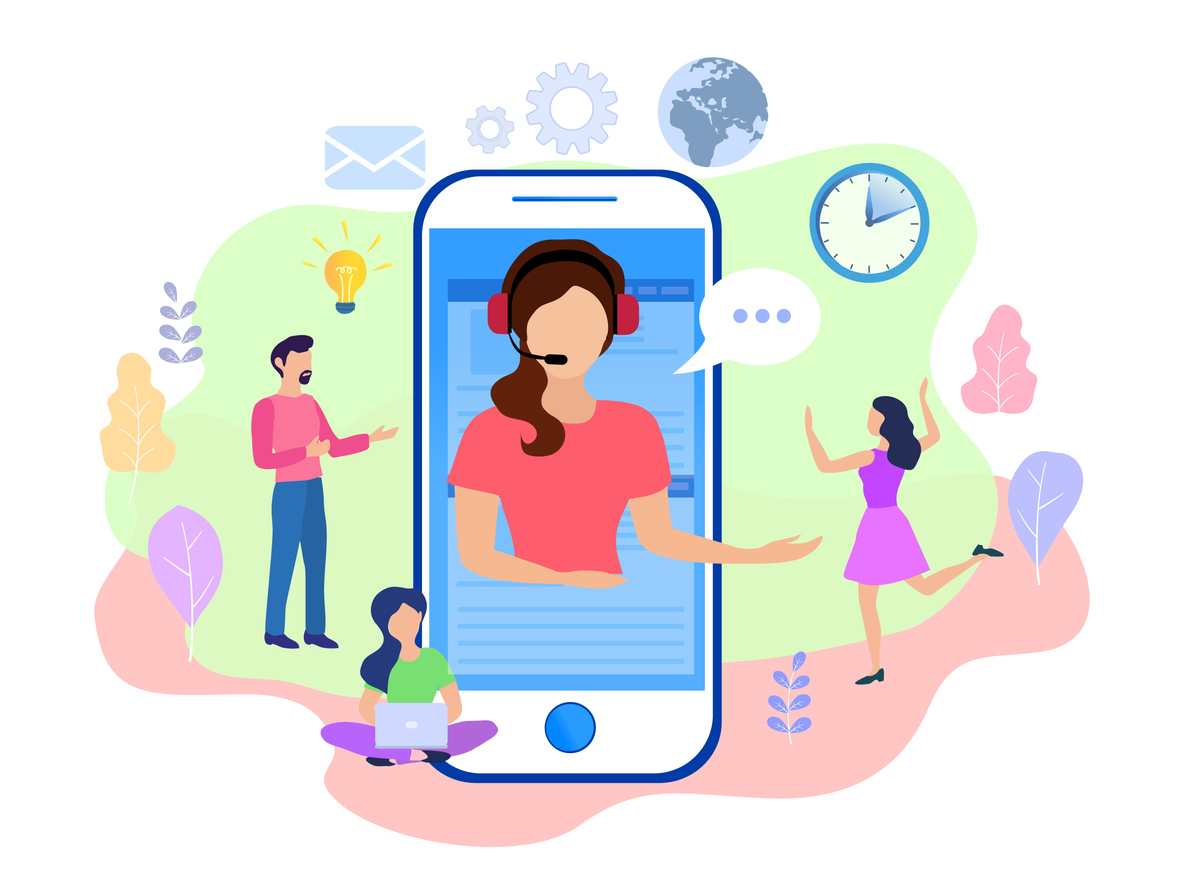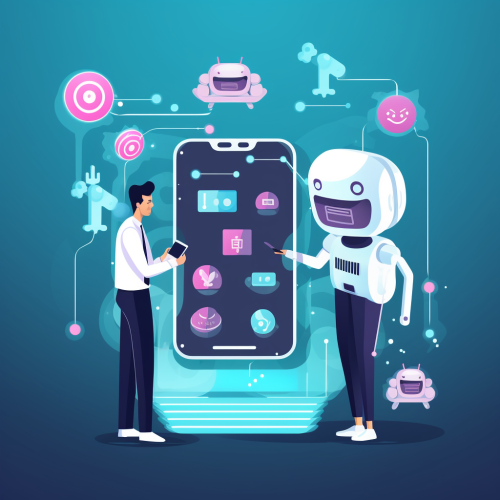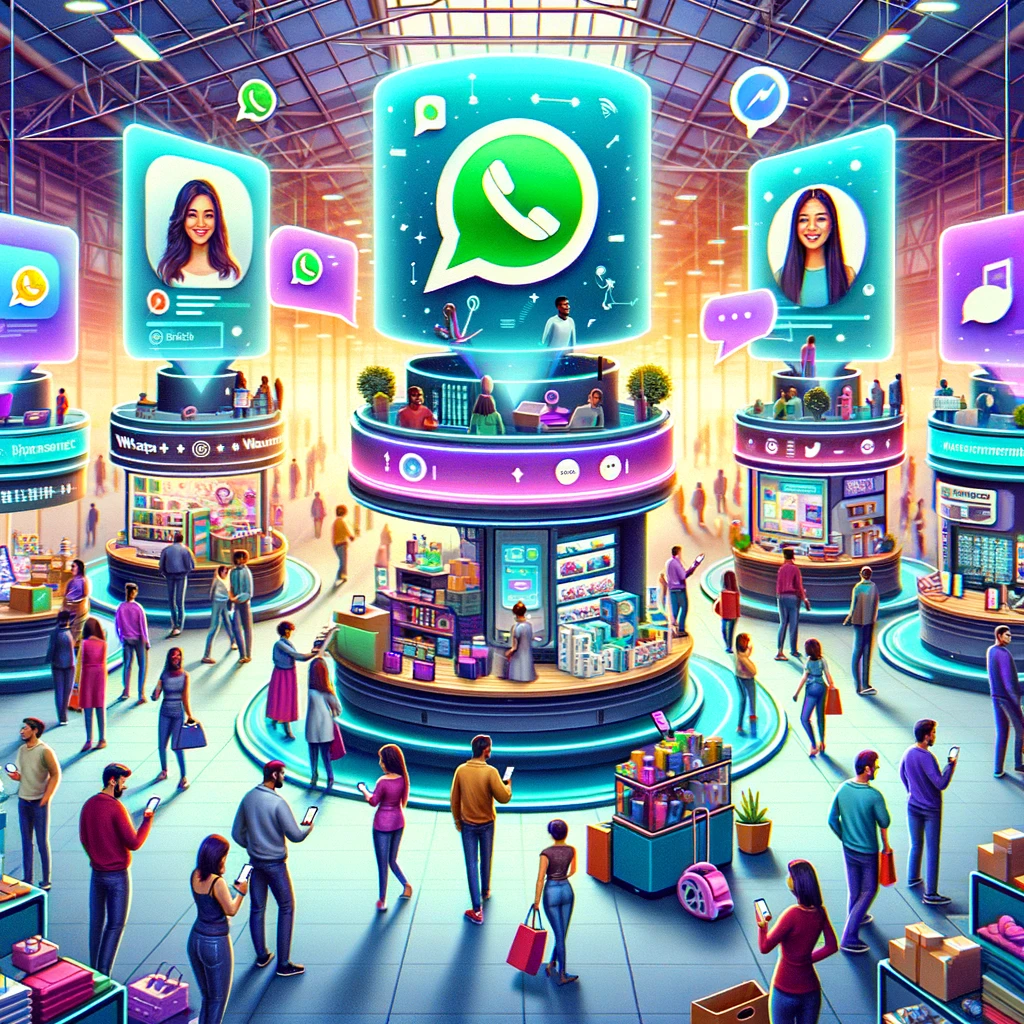Revolutionizing Customer Experience: How Chatbots Elevate Service
Introduction
In today's digital age, where the speed and quality of customer service can significantly impact a business's success, chatbots have emerged as a transformative solution. These AI-driven assistants are programmed to simulate human conversations, providing answers and instant responses to customer queries through text or voice communication. Initially, chatbots were simple rule-based systems capable of handling straightforward tasks. However, with advancements in artificial intelligence and machine learning, they have evolved into sophisticated tools capable of offering personalized customer experiences.
The importance of chatbots extends across various industries, from retail and banking to healthcare and hospitality, revolutionizing the way businesses interact with their customers. By automating responses and handling multiple inquiries simultaneously, chatbots not only increase operational efficiency but also ensure that customers receive immediate and 24/7 support. This round-the-clock availability is crucial in an era where consumers expect quick and convenient service at all times.
Furthermore, chatbots are instrumental in collecting and analyzing customer data, enabling businesses to understand their audience better and tailor their services accordingly. This data-driven approach helps in enhancing the overall customer experience, leading to higher satisfaction levels and, ultimately, loyalty.
As we continue to navigate through an increasingly digital world, the role of chatbots in customer service is set to become more integral. Their ability to improve customer experience by offering instant, personalized, and efficient support is transforming the customer service landscape, making them an indispensable asset for any forward-thinking business.
Understanding Customer Experience
Customer Experience (CX) is a comprehensive term that encompasses every interaction a customer has with a business, from the initial discovery and exploration stages to the purchase and post-purchase support. It's the sum total of perceptions and feelings formed through these interactions, influencing customer satisfaction, loyalty, and advocacy. In today's highly competitive business environment, CX has emerged as a critical differentiator, often outweighing price and product quality in decision-making processes. A superior customer experience not only attracts new customers but also fosters loyalty among existing ones, driving repeat business and positive word-of-mouth.
The evolution of customer service over the years reflects broader societal shifts towards digitalization and instant gratification. Traditional customer service channels, such as phone calls and in-person assistance, have gradually given way to digital solutions designed to meet the demands of the modern consumer. This shift has been driven by the growing expectation for quick, convenient, and round-the-clock customer service agents, regardless of location or time zone.
Digital solutions, including email, social media, live chat, and self-service knowledge bases, have become standard customer service tools, allowing businesses to offer immediate and accessible customer support anywhere. The transition to digital has not only catered to customer preferences for speed and convenience but has also enabled businesses to scale their customer service operations efficiently and cost-effectively.
The advent of artificial intelligence and machine learning technologies has further accelerated this shift towards digital solutions. Chatbots, in particular, represent the pinnacle of this evolution, offering an instant, personalized, and interactive customer service experience. By leveraging vast amounts of data, chatbots can predict customer needs, provide tailored recommendations, and resolve issues proactively, elevating the customer experience to new heights.
This digital transformation of customer service is not a temporary trend but a fundamental change in how businesses interact with their customers. As technology continues to advance, the focus on enhancing customer experience through innovative digital solutions will remain a key priority for businesses aiming to succeed in the modern marketplace.
The Rise of Chatbots in Customer Service
What Are Chatbots and How Do They Function?
Chatbots, a contraction of "chat robots," are software applications designed to simulate human-like conversations with users via text or voice interactions. These digital assistants use artificial intelligence (AI) and natural language processing (NLP) technologies to understand user queries, process them, and provide relevant, automated responses. Chatbots can range from simple, rule-based systems that follow predefined pathways to answer specific questions, to more advanced AI-driven bots capable of learning from interactions to improve their responses over time.
The functionality of chatbots in customer service is grounded in their ability to mimic the human conversation with agents. They are programmed to recognize customer inquiries, retrieve information from databases, interpret the context, and deliver responses that cater to the users' needs. This can include answering FAQs, guiding users through website navigation, providing product recommendations, or even resolving common issues. By automating these interactions, chatbots allow businesses to offer prompt and consistent support, enhancing the overall customer service experience.
Increasing Adoption of Chatbots in Customer Service
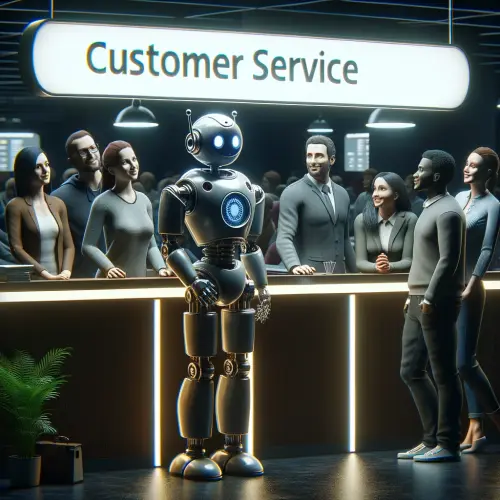
The adoption of chatbots in customer service has seen a significant uptick in recent years, driven by the dual forces of advancing technology and changing consumer expectations. According to a survey by Salesforce, "State of Service," 83% of IT leaders say chatbots are critical in customer service strategies, demonstrating the technology's growing importance.
Statistics and studies further highlight this trend, with Gartner predicting that by 2022, 70% of white-collar workers will interact with conversational platforms daily. This prediction underscores the integration of chatbots into the fabric of customer service operations, moving beyond mere novelty to become a necessity.
The adoption rates are also reflected in consumer behavior, with a report from Oracle indicating that 80% of businesses wanted chatbots by 2020. Moreover, a study by IBM suggests that chatbots can answer 80% of standard questions, highlighting their efficiency in customer effort and the potential for cost savings. These statistics not only demonstrate the widespread acceptance of chatbots but also their effectiveness in enhancing customer service by providing quick, accurate, and 24/7 support.
The rising trend of chatbot integration into customer service is a clear indication of the technology's value to businesses aiming to identify customer trends and meet and exceed modern consumer expectations. As chatbots continue to evolve, becoming more sophisticated and personalized, their role in shaping the future of customer service is undeniable. This transition towards automated, intelligent customer interactions represents a significant leap forward in the quest to deliver exceptional customer experiences.
How Chatbots Improve Customer Experience
The integration of chatbots into customer service strategies has fundamentally transformed the customer experience landscape. These AI-powered tools enhance interactions across several key dimensions: instant support, 24/7 availability, personalization, and multichannel support. Each of these areas contributes to a more responsive, convenient, and tailored customer journey.
Instant Support
In the digital age, consumers expect rapid responses to their inquiries. Chatbots excel in delivering this instant support, operating in real-time to answer questions, assist customers resolve issues, and guide users through website navigation. Unlike human agents, who can only handle one query at a time, chatbots can engage with an unlimited number of customers simultaneously, significantly reducing wait times and improving overall accessibility. This instantaneity ensures that customers receive timely assistance, leading to higher satisfaction rates and a better customer experience.
24/7 Availability
One of the most significant advantages of chatbots is their ability to provide continuous, 24/7 support. Businesses can no longer afford to be constrained by traditional operating hours in a global market where customers may need assistance at any time of the day or night. Chatbots eliminate these constraints, offering around-the-clock support to address customer needs whenever they arise. This relentless availability ensures that customers feel valued and supported, fostering a sense of loyalty and trust in the brand.
Personalization
Modern customers crave personalized experiences that reflect their preferences and history with a brand. Chatbots contribute to personalization by leveraging customer data and past interactions to tailor conversations and recommendations. Advanced AI chatbots can analyze a customer's purchase history, browsing behavior, and previous queries to provide customized responses and suggestions. This level of personalization enhances the customer experience, making interactions feel more relevant and engaging, ultimately leading to increased customer satisfaction and loyalty.
Multichannel or Omnichannel Support
Today's customers interact with brands across multiple channels, from social media and websites to messaging apps and email. Chatbots facilitate a seamless customer experience across these platforms, integrating with various communication channels to provide consistent support. Whether a customer prefers to ask questions via Facebook Messenger, WhatsApp, or directly on a website, chatbots can be there to offer immediate assistance. This multichannel support ensures that customers receive a unified experience, regardless of how or where they choose to engage with a brand, enhancing the overall customer journey.
In conclusion, chatbots significantly improve the customer experience by providing instant support, 24/7 availability, personalized interactions enabling customers, and multichannel support. These advancements not only meet but exceed customer expectations, setting new standards for customer service in the digital era. As businesses continue to harness the power of chatbots, the potential for further enhancing the customer experience is immense, promising even more innovative and customer-centric service models in the future.
Real-World Success Stories
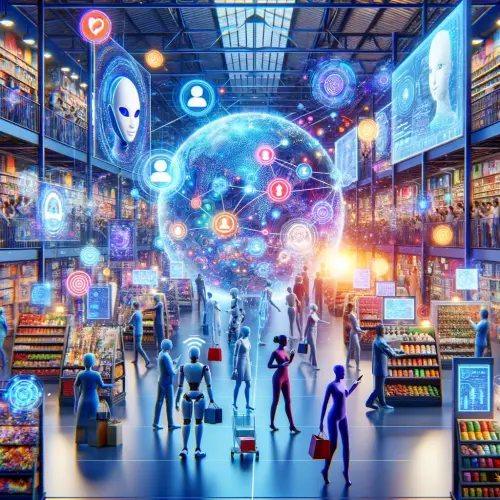
The implementation of chatbots across various industries has led to remarkable improvements in customer experience, operational efficiency, and overall customer satisfaction. Below are a few real-world success stories that highlight the transformative impact of chatbots in enhancing customer service and engagement.
Banking: Bank of America's Erica
Bank of America introduced Erica, a voice- and text-enabled chatbot, to provide its customers with personalized banking services. Erica assists users with transaction history, account monitoring, bill payments, and even financial advice, handling millions of queries since its launch. The success of Erica underscores the potential of chatbots to revolutionize customer service in the banking sector by offering personalized, convenient, and efficient assistance.
Retail: H&M's Fashion Bot
H&M's chatbot, available on the Kik platform, offers a personalized shopping experience by recommending outfits and products based on the customer's style preferences. Customers can browse collections, see how different items look together, and receive outfit recommendations, effectively mimicking the in-store experience. This innovative use of chatbots has enhanced customer engagement and personalized the shopping journey, leading to higher conversion rates and customer satisfaction.
Hospitality: Marriott's ChatBotlr
Marriott Hotels' ChatBotlr serves as a virtual butler, providing guests with instant answers to their queries, facilitating service requests, and even providing local travel tips. This 24/7 customer service tool ensures that guests can access information and services at their convenience, significantly enhancing the guest experience. Marriott's deployment of ChatBotlr highlights how chatbots can be used in the hospitality industry to offer a higher level of service and convenience, leading to improved customer satisfaction.
Travel: KLM Royal Dutch Airlines' BlueBot
KLM's BlueBot (BB) assists customers with booking tickets, providing flight information, and answering travel-related queries through Facebook Messenger, WhatsApp, and other platforms. By offering prompt, efficient service across multiple channels, BB has improved customer service efficiency and can improve customer satisfaction. KLM's success with BlueBot demonstrates the potential for chatbots in the travel industry to streamline customer service and enhance the booking experience.
These case studies illustrate the versatility and effectiveness of chatbots in improving customer experience across different sectors. By using customer messages, offering personalized assistance, 24/7 support, and seamless integration across multiple platforms, chatbots have become an essential tool for businesses looking to elevate their customer service and stay competitive in the digital age.
Designing an Effective Customer Experience Chatbot
Creating a chatbot that genuinely enhances the customer experience requires careful planning and attention to several key considerations. From ensuring user-friendly interfaces to understanding customer needs and integrating with existing Customer Relationship Management (CRM) systems, each aspect plays a crucial role in the chatbot’s effectiveness. Below are the essential considerations businesses must address to design a chatbot that meets and exceeds customer expectations.
User-Friendly Interfaces
The interface of a chatbot is its most visible aspect and the primary point of interaction with users. A user-friendly interface is intuitive, easy to navigate, and clear in its communication. This involves simple and conversational language, quick-reply buttons, and visual elements like images and carousels to make the interaction more engaging. Ensuring the chatbot can handle and gracefully recover from misunderstandings is also crucial, guiding users back on track with suggestions or offering to connect them with a human agent if the query becomes too complex.
Understanding Customer Needs
A successful chatbot must be designed with a deep understanding of its users' needs and preferences. This involves identifying the most common customer requests and inquiries, understanding the context in which questions are asked, and anticipating potential follow-up questions. Incorporating customer feedback loops into the chatbot's design process can help refine its responses and functionalities over time. By grounding the chatbot’s development in actual user needs, businesses can ensure it provides value and relevance in every interaction.
Integration with Existing CRM Systems
For a chatbot to offer personalized and contextually relevant interactions, it must be integrated with the business’s existing CRM systems. This integration allows the chatbot to access customer profiles, purchase history, and previous interactions, enabling it to deliver tailored recommendations and support. Moreover, by capturing and using customer behavior and feeding new interaction data back into the CRM, the chatbot helps create a more complete and dynamic view of customer preferences and behavior, further enhancing the personalization of future engagements.
Continuous Learning and Improvement
Designing an effective customer experience chatbot is not a one-time task but an ongoing process of learning and adaptation. Implementing AI and machine learning algorithms can enable the chatbot to improve its responses over time based on interactions with users. Regularly reviewing chatbot conversations and user feedback can also provide insights into areas for improvement, new functionalities to add, and how to refine the user experience further.
Ethical and Privacy Considerations
In the design and deployment of chatbots, respecting user privacy and ethical considerations is paramount. This means being transparent about the use of a chatbot, securing customer data, and ensuring compliance with relevant laws and regulations, such as GDPR in Europe. Providing users with options to opt-out of chatbot interactions or to escalate their query to a human agent when necessary is also crucial for maintaining trust and a positive user experience.
In conclusion, designing an effective customer experience chatbot involves a holistic approach that considers user-friendliness, a deep understanding of customer needs, seamless integration with existing systems, and an ongoing commitment to learning and improvement. By addressing these key considerations, businesses can develop their customer service chatbots that not only meet customer expectations but significantly enhance the overall customer experience.
Conclusion
As we've explored throughout this article, the integration of chatbots into customer service operations can significantly enhance the customer experience, offering instant support, 24/7 availability, personalized interactions with virtual agents, and seamless multichannel support. The future of customer service is here, and chatbots are leading the way in transforming how businesses engage with their customers.
If you're intrigued by the potential of chatbots to revolutionize your customer service and are keen to explore how these digital assistants can be tailored to your business's unique needs, we invite you to dive deeper into this transformative technology. Whether you're just starting your journey with chatbots or looking to refine and expand your existing digital assistant capabilities, our team is here to guide you through every step of the process.
Contact us today for a comprehensive consultation or to schedule a demo. Discover how implementing chatbots in your customer service operations can elevate your customer experience, streamline your customer service team and offerings, and position your business as a forward-thinking leader in the digital age. Let's embark on this journey together, leveraging the power of chatbots to create exceptional, efficient, and engaging customer experiences.

